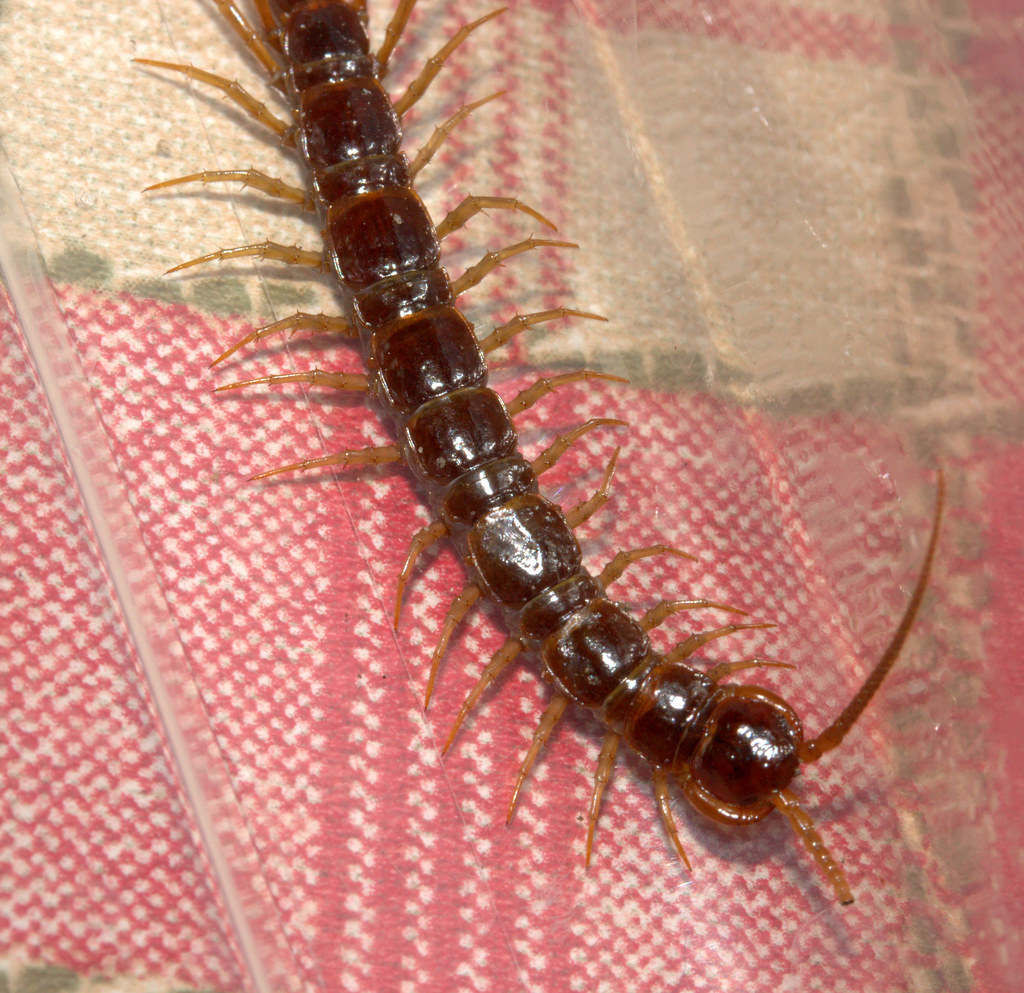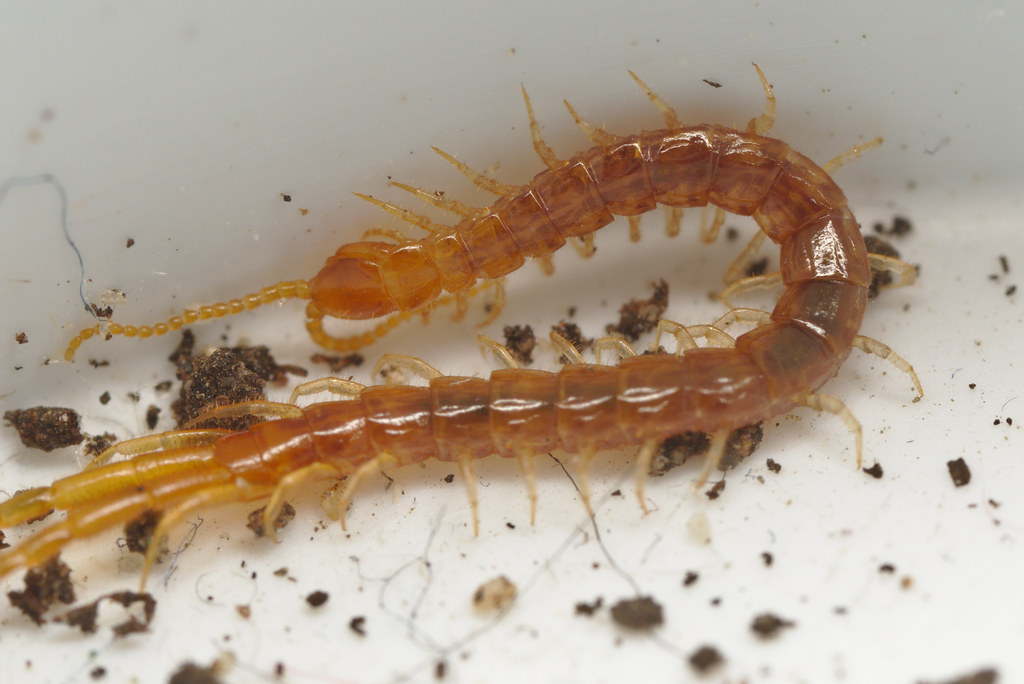I recently posted a picture about the first centipede, which is an eyeless burrowing centipede. Its shown here:
http://www.photomacrography.net/forum/v ... hp?t=33091
With that one I put it into a small clear plastic cup, and inverted it into a white plate so that it was trapped it in a curled position in the cup but on the plate surface. I composed my camera above it, then I removed the cup and quickly took the picture before the critter extended out beyond the field of view. At most I could get off one picture. The centipede was retrieved, and I repeated the process until I felt I had enough to pick out the best ones.
I expect you could do the same for the other centipedes, though some are faster. One thing I had done with speedy arthropods is let them sit under a cup for a period to calm down before I uncovered them for pictures. For exceptionally fast species I did my photography in my bathtub so they could not get away. Plug the drain hole, btw (I did not do that once. That was exciting).
One could do all this in a staged shoot upon a natural substrate. I suppose one could also try the cup method in a fully natural setting, but there is a greater chance that the subject will get away.
 Centipede by davholla2002, on Flickr
Centipede by davholla2002, on Flickr IMG_4226Centipde60mm by davholla2002, on Flickr
IMG_4226Centipde60mm by davholla2002, on Flickr CentipedeEF7A9546 by davholla2002, on Flickr
CentipedeEF7A9546 by davholla2002, on Flickr